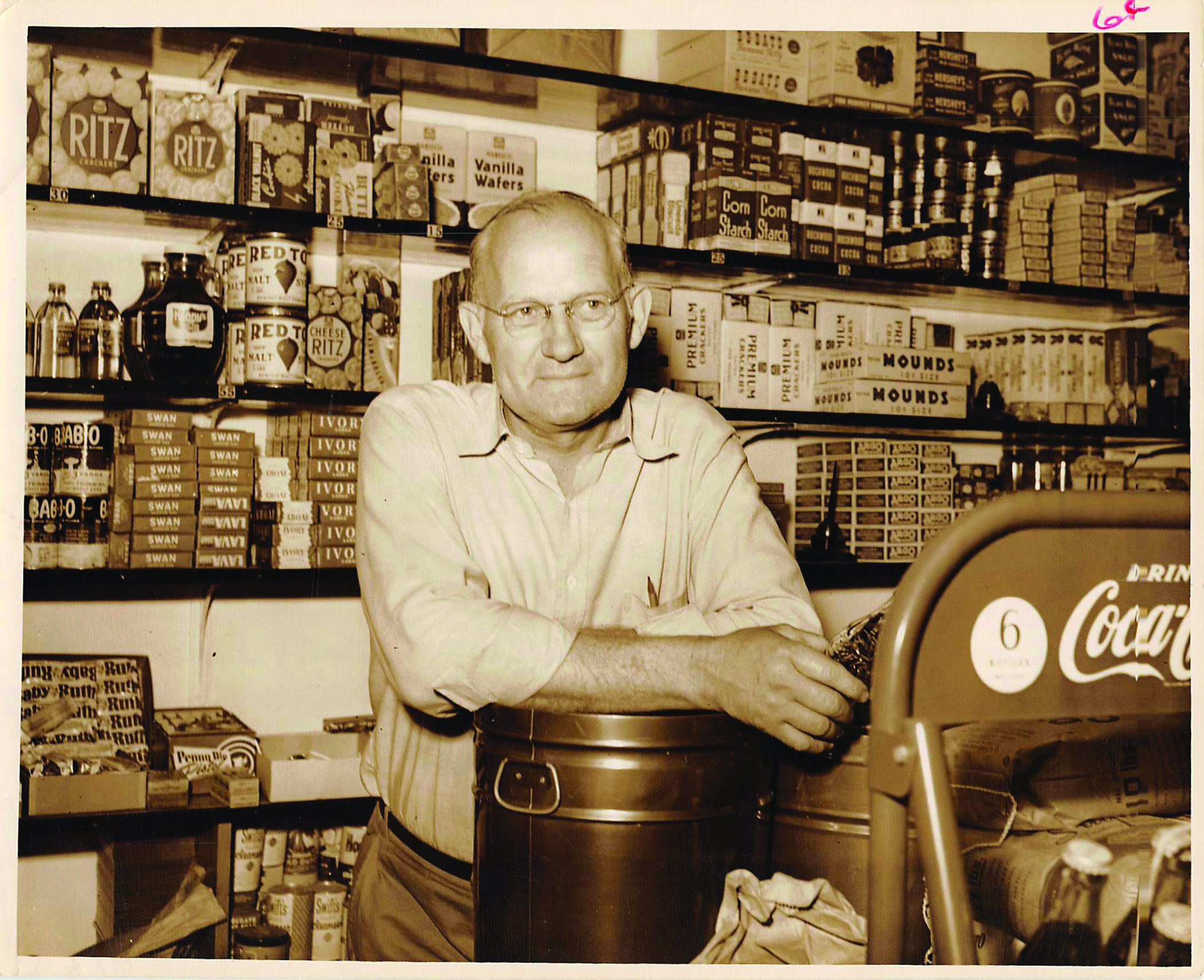
Those of us that watched Little House on the Prairie were given an insight into how folks “shopped” back in the day. The Ingalls girls, Laura and Mary, purchased chalkboards and pencils for school from Olson’s Mercantile and Ma Ingalls would shop there for fabric to make clothes for the family. Furthermore, we saw that Mr. Olson had to special order the new stove for Charles to surprise Caroline for Christmas. Farmers grew or raised most of the food that their families would consume. However, the need for items not produced or crafted on the homestead required fulfilling by a trip into town to the general mercantile. Ledger books from the early days of commercial enterprise in Holly Springs depict purchasing habits of each household in the community. Accounts were generally paid upon harvest of the cash crop, which at first for Holly Springs was cotton, and then tobacco in later years.
The earliest mention of general mercantile stores are those operated by Richard Jones and Arthur Branch in the 1800s, followed closely by Archibald Leslie in the early 1840s. By the mid-1870s, George Benton Alford had moved from Middle Creek having purchased Leslie Manor. He build his mercantile store at the corner of Center and Main Street. At least a dozen general stores had brief existences in town during this time. Proprietors were Nathan G. Burns, A.P. Cross, Marcus C. Nichols, both A.S. Pope and J.P. Pope, A.J. Rhodes, Charles Richardson, George Turner, Dallas Upchurch and John G. Utley.
Three businesses became longtime landmarks. G.B. Alford’s mercantile was one of the leading stores for several decades. Soon after Thomas B. Holt arrived in Holly Springs in 1882, he and partner Marcus C. Nichols opened a general store on the east side of Main Street where Holt continued in business for nearly forty years. Toward the end of the decade, Joseph R. and J. Frank Carter’s general store began its long tenure as a village fixture. The store later became a drugstore.
T
hese general stores served purposes other than a repository of household and personal goods. A general store was a central congre-gating place for men-folk to discuss crops, weather and local news. A checkerboard on top a whiskey barrel was a common sight. A well-placed hoop cheese box filled with sand served as a spittoon in Lashley’s Store (originally G.B. Alford’s store). The store posted a sign that read, “If you spit on the floor at home, spit on it here; we want you to feel at home.” Straight-back chairs pulled around a pot-bellied stove were the ideal spot to discuss the spring rains and the first planting. The women of the community could catch up on the latest gossip or browse through the newest issue of Godey’s Lady’s Book to see what the latest fashions were in Paris or New York. The children could spend that precious penny to buy a peppermint stick.
Some of these mercantile stores special-ized in items such as buggies, sewing machines or even caskets. These stores slowly faded into history with the needs of the community changing. The convenience store where one can pick up a gallon of milk and a loaf of bread on the drive home from work became the standard versus the farmer coming “into town” for staples or dry goods. Progress and growth replaced a life that was much simpler. I think it would be lovely to have Mr. Olson wait on me to fill my order; not Mrs. Olson though, she always seemed so cranky.